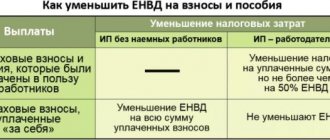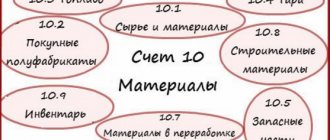Receipt adjustment is in many ways similar to Sales Adjustment, which is similar in purpose (see the article on working with Sales Adjustment). In fact, the reflection of the document in accounting differs due to legal requirements.
The document also has the ability to select two types of operations:
• Correction in primary documents • Adjustment by agreement of the parties
We can fix:
• downward or upward, • documents of the current year and previous years.
At the beginning of the article there is a step-by-step description of the work - the sequence is similar for all situations. In the second part of the article we will look at the details in more detail.
Adjustment of receipts in 1s UPP and KA 1.1 step-by-step instructions
Step 1: Create a Receipt Adjustment based on the Receipt of Goods and Services document that needs to be corrected. We make the necessary changes and carry out. The second part of the article will describe in detail how to make corrections.
Entering in 1C Receipt adjustments based on Receipt of goods and services
Step 2: Enter the invoice using the hyperlink from Receipt Adjustment. The invoice must be recorded so that the correction is correctly reflected in accounting and reporting in subsequent steps.
Step 3: After making any adjustments, you need to start processing Posting documents to VAT registers.
Processing Carrying out documents according to VAT registers
This is usually done at the end of the month. This must be done before generating purchase or sales ledger entries, since Receipt Adjustments do not perform movements in the VAT registers themselves. If you do not start processing, the corrections will not end up in the required sections of the sales or purchases book. Posting documents through VAT registers is launched from the Account Manager interface:
Carrying out documents according to VAT registers in 1C
Step 4: For different transactions, the receipt adjustment can be taken into account in additional sheets of the purchase ledger or sales ledger. Therefore, in the next step we need to make the documents Formation of purchase ledger entries and Formation of sales ledger entries. This is also a mandatory procedure when closing the month. To create these documents, it is convenient to use the processing Formation of VAT documents:
Formation of documents for VAT accounting in 1C UPP and KA 1.1.
To start processing, you must specify the setting for generating VAT documents. In fact, this setting determines whether documents should be generated manually or on a schedule. You can set up an automatic schedule in it. But now we will not do this and start processing manually:
Formation of purchase book and sales book entries in 1C UPP and KA 1.1
Step 5: Let's see how our adjustments were reflected in the books of purchases and sales.
All!
Now let's look at the details of the options:
Buyer situations
When a reduction adjustment invoice is received from a vendor or supplier, the postings depend on the specific reason for issuing the document. The table below discusses the main situations on this issue.
| Postings when decreasing | |
| Situation | Solution |
| Received a discount on items already purchased. According to the terms of the contract, she adjusts their price | 1. Discount on goods that the buyer has not yet sold: · REVERSE Dt 41 – Kt 60 (goods were purchased for the amount indicated in column 5 of line “Total reduction (sum of lines D)” of the adjustment invoice; · Dt 60 – Kt 68 (VAT has been restored for the amount from column 8 of line “Total reduction (amount of lines D)”. 2. Discount on goods that the buyer has already sold: · REVERSE Dt 90-2 – Kt 60 (writing off the cost of sales for the amount from column 5 of line “ Total reduction (sum of lines G)"; · Dt 60 – Kt 68 (VAT has been restored for the amount from column 8 of line “Total decrease (sum of lines G)". |
| The buyer accepted a smaller number of goods than agreed upon in the initial invoice from the seller (for example, due to defects or incomplete delivery) | There is no need to change anything in accounting, since valuables need to be capitalized only upon their acceptance (letter of the Ministry of Finance dated February 10, 2012 No. 03-07-09/05). That is, no additional wiring is needed. |
Downward adjustment of current year revenue
We need to reduce the Receipt of goods and services issued in the previous quarter:
Receipt of goods and services in 1C UPP and KA 1.1
VAT reporting has already been submitted.
1.1. Adjustment of receipt with correction in the purchase book
Based on the Receipt of goods and services, we will enter the document Receipt Adjustment. 1C creates it with the default operation type Correction of primary documents. Let's reduce the price one line at a time:
Adjustment of receipts in 1C UPP and KA 1.1.
1C by default puts the Restore VAT flag in the sales book. I'll take it off. The document generates transactions:
Adjustment of receipts in 1C - postings
Fill in the details of the corrected supplier invoice using the hyperlink in the footer of the document.
Where to enter a correction invoice in 1C
We carry out the regulatory procedures for VAT specified in steps 3 and 4. Posting documents to VAT registers adds a reversal of the VAT deduction to the postings of the Receipt Adjustment document.
Adjustment of receipts in 1C UPP and KA 1.1 - postings
In Creating a purchase book, we will create a record:
Formation of purchase book entries in 1C UPP and KA 1.1.
Now we can look at the results obtained in the Purchase Book. Check the box Generate additional. sheets for the adjusted period. There is a new entry in the Main section:
Purchase book in 1C - main section
In the Additional sheet, a complete adjustment of the entry for the adjusted receipt:
Purchase book in 1C UPP and KA 1.1 Additional sheet
An adjustment with the transaction type Correction in primary documents reverses the amounts on the basis document and creates a new entry in the period in which the adjustment is created.
Correction of receipt: correction of own error in 1C 8.3
On December 27, the accountant discovered that due to inattention, supplier invoice No. 1205 dated September 25 was registered with the incorrect number 1250.
Identifying the error
When checking the invoices, the accountant discovered that the registered invoice number from the supplier was different from the original.
Bug fix
Correct the error in the SF details with the document Receipt Adjustment . Create it based on the document Receipt (act, invoice) .
The basis and What we are correcting will be filled in with the data of the document being corrected.
Please indicate:
- Type of operation - Correcting your own error ;
- The incoming number in the New value is 1205 ;
- Reflect the adjustment - Only in VAT accounting .
Because an error was made only in the details of the Federation Council, only VAT accounting is corrected. If a total error is made, indicate Reflect the adjustment - In all accounting sections .
Enter the technical document Invoice received by clicking the Register .
The corrected SF will be reflected in the add. sheet of the Purchase Book for the 3rd quarter, i.e. in the period when the primary SF is cancelled.
Purchase Book report from the Reports – VAT – Purchase Book section. PDF
Submission of an updated VAT return for the 3rd quarter. to the Federal Tax Service
Submit an updated return for the 3rd quarter for the period in which the error was corrected.
On the title page:
- Correction number - 1 : number of the updated declaration in order.
- Tax (reporting) period (code) - 23 “third quarter” : numeric code of the period for which the updated declaration is submitted.
In Section 8 “Information from the purchase book”:
- Previously presented information is current , because the amount did not change.
In Section 8 Appendix 1 “Information from additional. sheets of the purchase book":
- Previously submitted information is not relevant because Appendix 1 is being submitted for the first time;
- with a minus - canceled primary invoice, transaction type code "";
- with a plus - corrected invoice, transaction type code "".
See also: Procedure for submitting an updated declaration
Adjustment of input VAT to reduce value
First, we will generate incoming and outgoing invoices, which we will later make adjustments to.
Fig.1
In Fig. 1 we see the receipt of goods under invoice No. 00BP-000003 (supplier Aquilon). Invoice No. 123 was issued (Fig. 2).
Fig.2
Suppose that when purchasing a batch of goods of 1000 or more pieces, the supplier provided a discount, as a result of which both the total cost and VAT decreased. To reflect the decrease in value, based on the invoice No. 00BP-000003, we will create an adjustment to receipt No. 1 dated January 23, 2017 (Fig. 3)
Fig.3
On the “Products” page it is possible to specify a new price (Fig. 4). Amounts in the columns “Cost”, “VAT”, “Total” are calculated automatically.
Fig.4
Just like in the invoice, it is possible to register an invoice in the adjustment document (Fig. 5). This invoice will be an adjustment invoice.
Fig.5
The adjustment invoice in 1C 8.3 is slightly different from the usual one. It contains fields that indicate the change in value. In our example, the fields to reduce the amount are filled in.
Now let's create a purchase book and a sales book. Let's analyze both reports at once, since when the cost decreases, the adjustment invoice should go into the sales book, and the primary invoice should go into the purchase book.
Fig.6
Let’s generate the “Purchases Book” report (Fig. 6). A line appeared in it for the counterparty “Aquilon”
Let's check the sales book (Fig. 7). This report contains an entry about adjustment invoice No. 1 dated 01/23/2017, created on the basis of invoice No. 123 dated 01/16/2017. That's right!
Fig.7
Errors when accounting for incoming VAT in 1C
However, errors also occur here. For example, documents are often entered backdated, and the dates of the receipt document and the invoice may not match. Inconsistent dates may result in errors in the purchase ledger. If the “Reflect VAT deduction in the purchase book by the date of receipt” checkbox is checked, then the invoice should appear in the purchase book in the period to which its date belongs. Accordingly, if by mistake the dates differ, then we may not see the invoice in the purchase book.
There are times when the dates really don't match. For example, when goods and documents for them arrive at different times; or when the equipment arrives. Let us recall the second point of the three necessary conditions: “Purchased goods must be capitalized, i.e. stand on the company's balance sheet."
It often happens that the receipt of fixed assets or equipment and the acceptance of these objects for accounting refer to different reporting periods. In this case, the document “Creating purchase ledger entries” is drawn up (Fig. 8). The checkbox “Reflect the VAT deduction in the purchase book by the date of receipt” should be unchecked (see Fig. 3, Fig. 4, Fig. 5). VAT will be deducted only after the equipment is accepted for registration (Fig. 6, Fig. 7). If there is no posting Dt01 - Kt08, then there is no invoice in the purchase book.
Fig.3
Fig.4
Fig.5
Fig.6
Fig.7
Fig.8
Another error is related to the “VAT included in price” checkbox (Fig. 9). This checkbox is used for separate VAT accounting, when materials will obviously be used in the production of products sold without VAT. To accept VAT for deduction on received materials, you must turn off this checkbox.
Fig.9
Adjustment of sales of the previous period
Let's look at an example.
Let’s say that the Confetprom company discovered a technical error in March when selling communication services for December 2015; the amount of income was underestimated by 20,000 rubles.
The implementation of communication services in 1C 8.3 was formalized by the document Sales (acts, invoices) from the Sales section. An invoice was also immediately registered:
A corrective document Implementation Adjustment was issued for this implementation. The type of operation in case of a technical error is selected Correction in primary documents. On the Services tab, you need to make corrective changes:
It is also necessary to issue a corrected invoice:
Corrective entries are reflected in the movements:
The corrected implementation is reflected in an additional sheet of the Sales Book. To create it, you need to go to the Sales – Sales Book page:
How to correct an error in receipt or shipment documents that affects primary documents, as well as special tax accounting registers, is discussed in our next article.
Seller situations
Buyer discount
As a general rule, a buyer's discount on goods supplied to him changes their price. It is reflected in column 5 of the adjustment document. Accordingly, it reduces revenue. The seller makes the following accounting entries:
- REVERSE Dt 62 – Kt 90.1 – revenue from the sale of goods is reduced by the difference (taken from column 9 of the line “Total reduction”);
- REVERSE Dt 90.3 – Kt 68 – VAT is charged on the amount of the difference (taken from column 8 of the line “Total reduction”).
Buyer's refusal
It happens that the buyer accepted fewer goods than was agreed on in the initial invoice. For example, due to incomplete delivery or defective condition. Then the accountant makes the corresponding entries for the day when the buyer’s documentary refusal to accept part of the goods is received:
- REVERSE Dt 62 – Kt 90.1 (goods sold, taken from column 9 of the line “Total decrease”);
- REVERSE Dt 90.3 – Kt 68 (VAT accrual, taken from column 8 of line “Total reduction”);
- REVERSE Dt 90.2 – Kt 41 (43, 20) (writing off the cost of goods for which the buyer refused).
Refund of VAT defaulter
Another fairly common situation is when a VAT non-payer buyer refuses a completely high-quality product. In this case, the accountant takes into account the returned part of the shipment at the cost indicated in the return invoice (minus VAT accepted for deduction).
On the date when the documents for the returned goods arrived, the following entries are written in accounting:
- Dt 41 – Kt 62: we take into account the values that have been returned;
- Dt 19 – Kt 62: we take into account VAT according to the adjustment document;
- Dt 68 – Kt 19: tax deductible on the adjustment invoice;
- Dt 62 – Kt 51: refund to the buyer.
Also see Adjustment Invoice for Decrease.
Read also
11.05.2017







